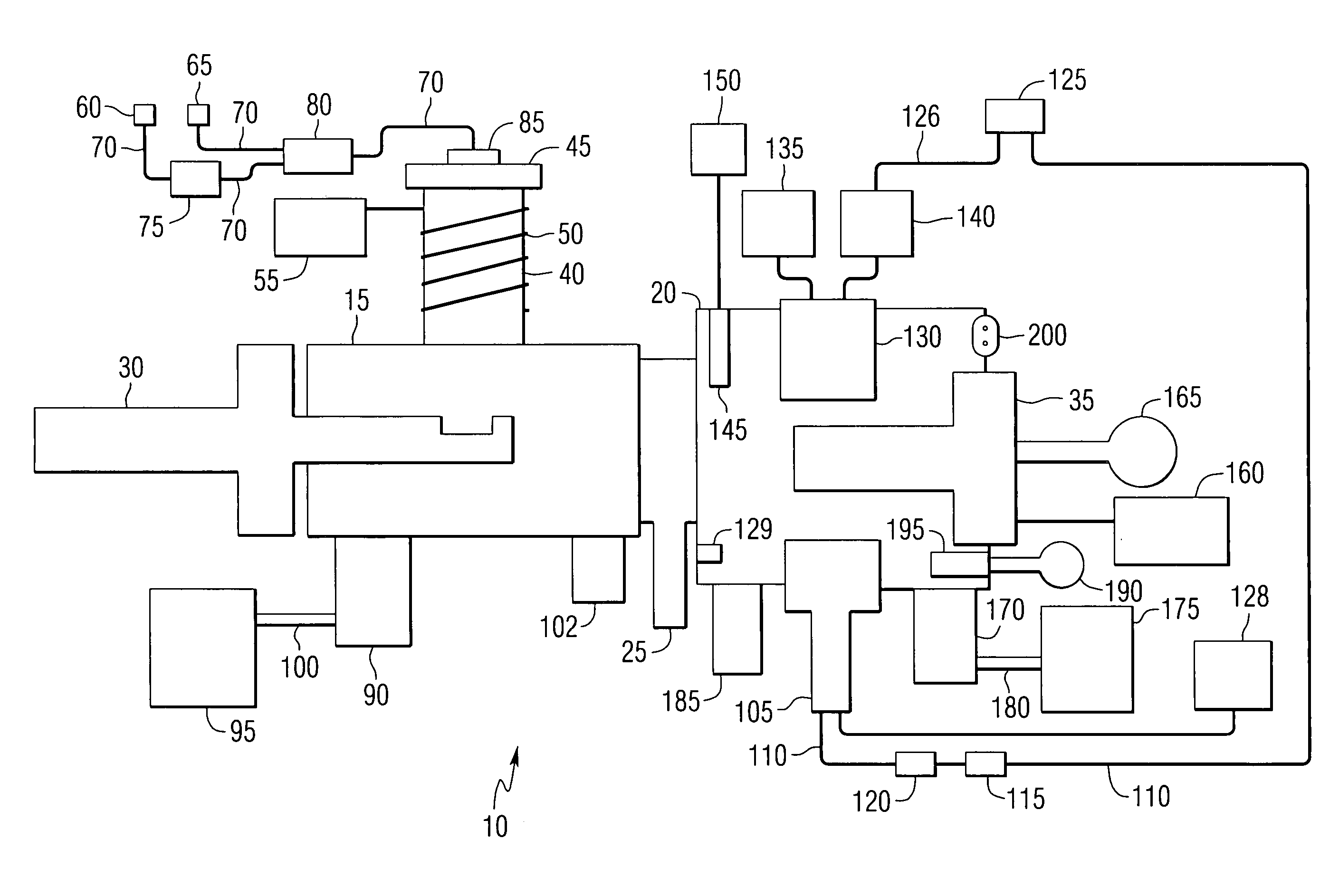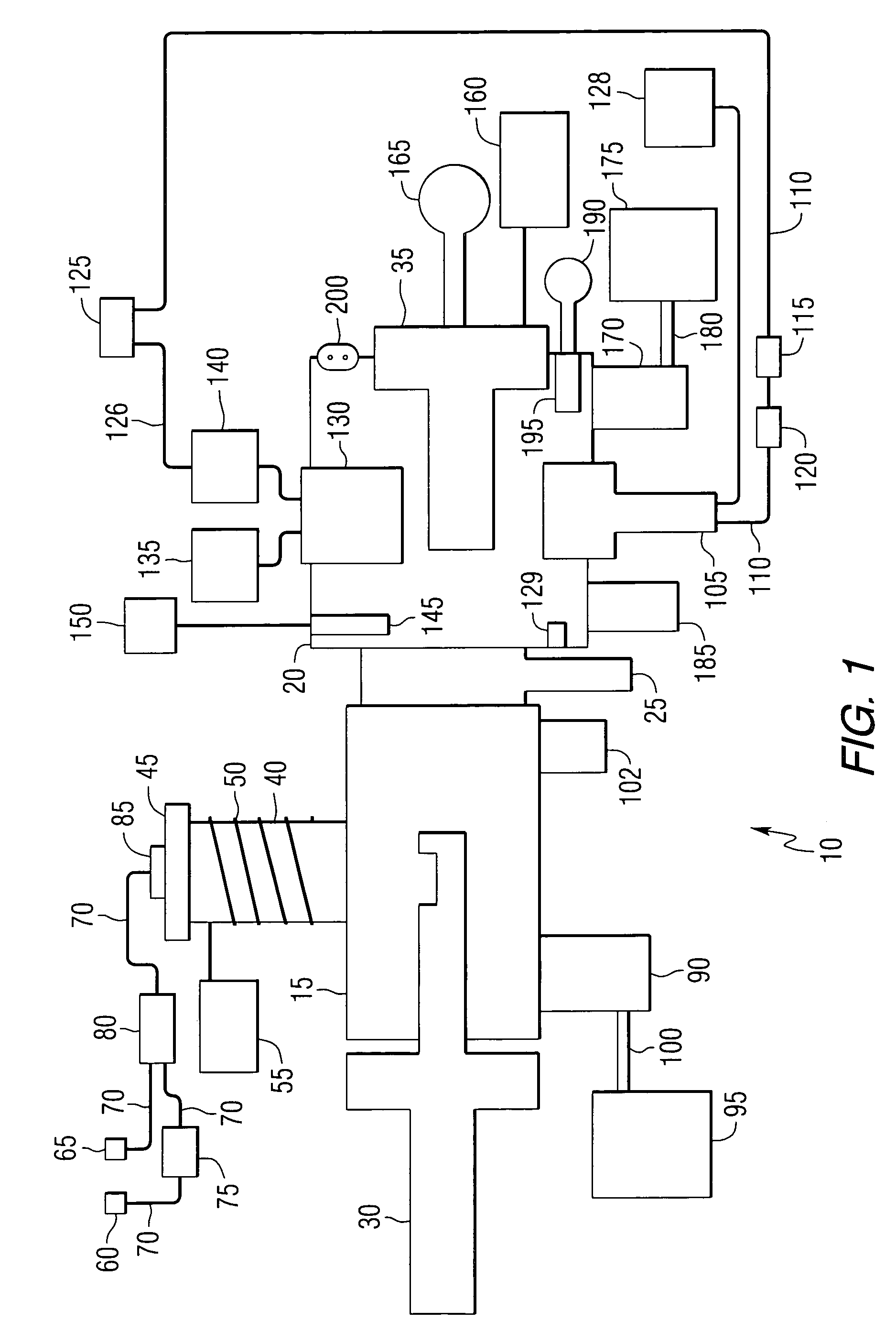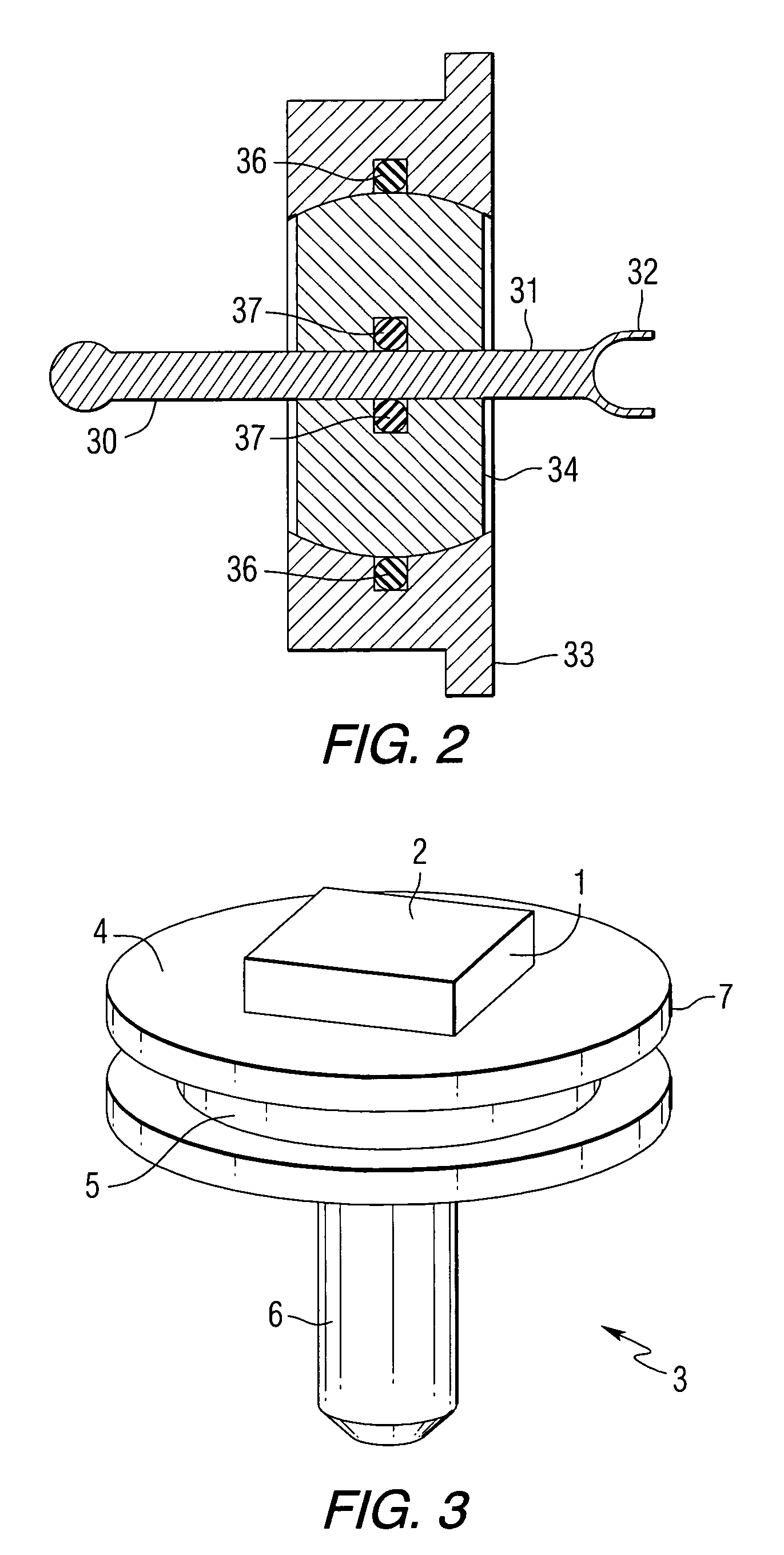Method and apparatus for preparing specimens for microscopy
a microscopy and specimen technology, applied in the field of methods and apparatus for preparing specimens for microscope examination, can solve the problems of reactive ions, inability to effectively image using the secondary electron mode of an sem, and little or no topography
- Summary
- Abstract
- Description
- Claims
- Application Information
AI Technical Summary
Benefits of technology
Problems solved by technology
Method used
Image
Examples
Embodiment Construction
[0051]Referring to FIG. 1, a block diagram of plasma cleaning, etching and coating apparatus 10 according to a first embodiment of the present invention is shown in which specimens may be plasma cleaned, etched or coated alone or in any combination under a continuous vacuum state. Plasma cleaning, etching and coating apparatus 10 includes plasma chamber 15 made of, for example, stainless steel or aluminum, in which a specimen may be subjected to a plasma cleaning operation such as that described in Fischione, U.S. Pat. No. 5,633,502. Plasma cleaning, etching and coating apparatus 10 also includes etching and coating chamber 20 made of, for example, stainless steel or aluminum, in which a specimen may be etched, coated, or both. Plasma chamber 15 and etching and coating chamber 20 are connected by vacuum valve 25, which may be manually or automatically actuated. Preferably, vacuum valve 25 is provided with interlocking capability to prevent inadvertent opening of vacuum valve 25 if p...
PUM
| Property | Measurement | Unit |
|---|---|---|
| height | aaaaa | aaaaa |
| frequency | aaaaa | aaaaa |
| frequency | aaaaa | aaaaa |
Abstract
Description
Claims
Application Information
 Login to View More
Login to View More - R&D
- Intellectual Property
- Life Sciences
- Materials
- Tech Scout
- Unparalleled Data Quality
- Higher Quality Content
- 60% Fewer Hallucinations
Browse by: Latest US Patents, China's latest patents, Technical Efficacy Thesaurus, Application Domain, Technology Topic, Popular Technical Reports.
© 2025 PatSnap. All rights reserved.Legal|Privacy policy|Modern Slavery Act Transparency Statement|Sitemap|About US| Contact US: help@patsnap.com



